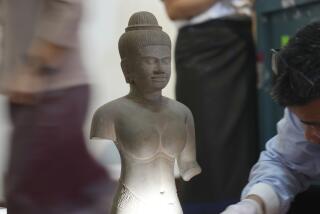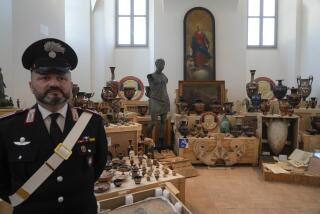Getty to return illegally excavated Orpheus sculptures, some great antiquities, to Italy
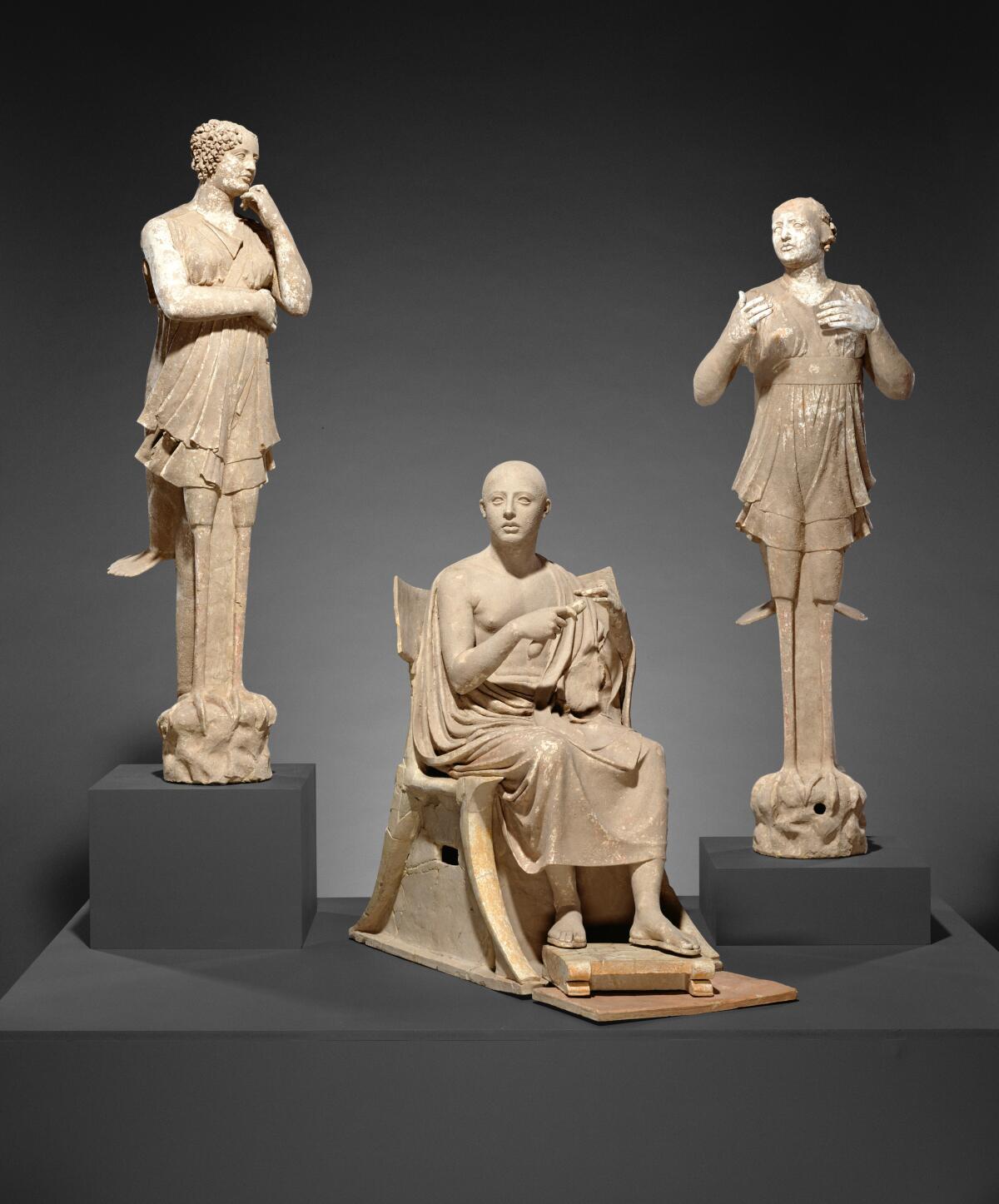
- Share via
The J. Paul Getty Museum is returning its Orpheus group of sculptures — a culturally significant group of nearly life-size terra-cotta figures known as “Orpheus and the Sirens,” some of the museum’s greatest antiquities — to Italy. The objects, which have been determined to have been illegally excavated and exported, will be sent to Rome in September. The institution is coordinating with Italy’s Ministry of Culture to send four other objects back as well at a future date.
“The Getty is not in a position to comment on information that led to the return of the Orpheus,” spokesperson Julie Jaskol said. “The information was supplied by Matthew Bogdanos of the Antiquities Trafficking Unit of the Manhattan district attorney’s office, who developed the evidence in an investigation unrelated to the Getty. The evidence persuaded us that the statues had been illegally excavated and it was appropriate to return them in accordance with Getty policy.”
Bogdanos was not able to comment given that the investigation is still in progress, a spokesperson for the Manhattan district attorney’s office said.
“This piece is being returned pursuant to an ongoing and active criminal investigation,” the spokesperson said in an email, “which uncovered the antiquity was illegally trafficked.”
“Orpheus and the Sirens” is extremely fragile, and the museum says it is working on “specially tailored equipment and procedures” regarding its transfer.
J. Paul Getty purchased the Orpheus sculptures in the spring of 1976. It was among his final acquisitions prior to his June 6 death.
In his diary, which is part of the Getty’s archives, an entry from Saturday, March 6, 1976, notes that he “bought the following objects” including “a group of 3 Greek statues made in Tarentum at the end of the 4th C.B.C. They represent a singer Orpheus seated and 2 standing sirens. $550,000 from Bank Leu. All of these naturally were on [Czech American archaeologist Jiří Frel’s] recommendation.” Frel was the Getty’s antiquities curator from 1973 to 1986.
The $550,000 Getty paid in 1976 is equivalent to around $3 million today, according to the U.S. Bureau of Labor Statistics’ CPI Inflation Calculator.
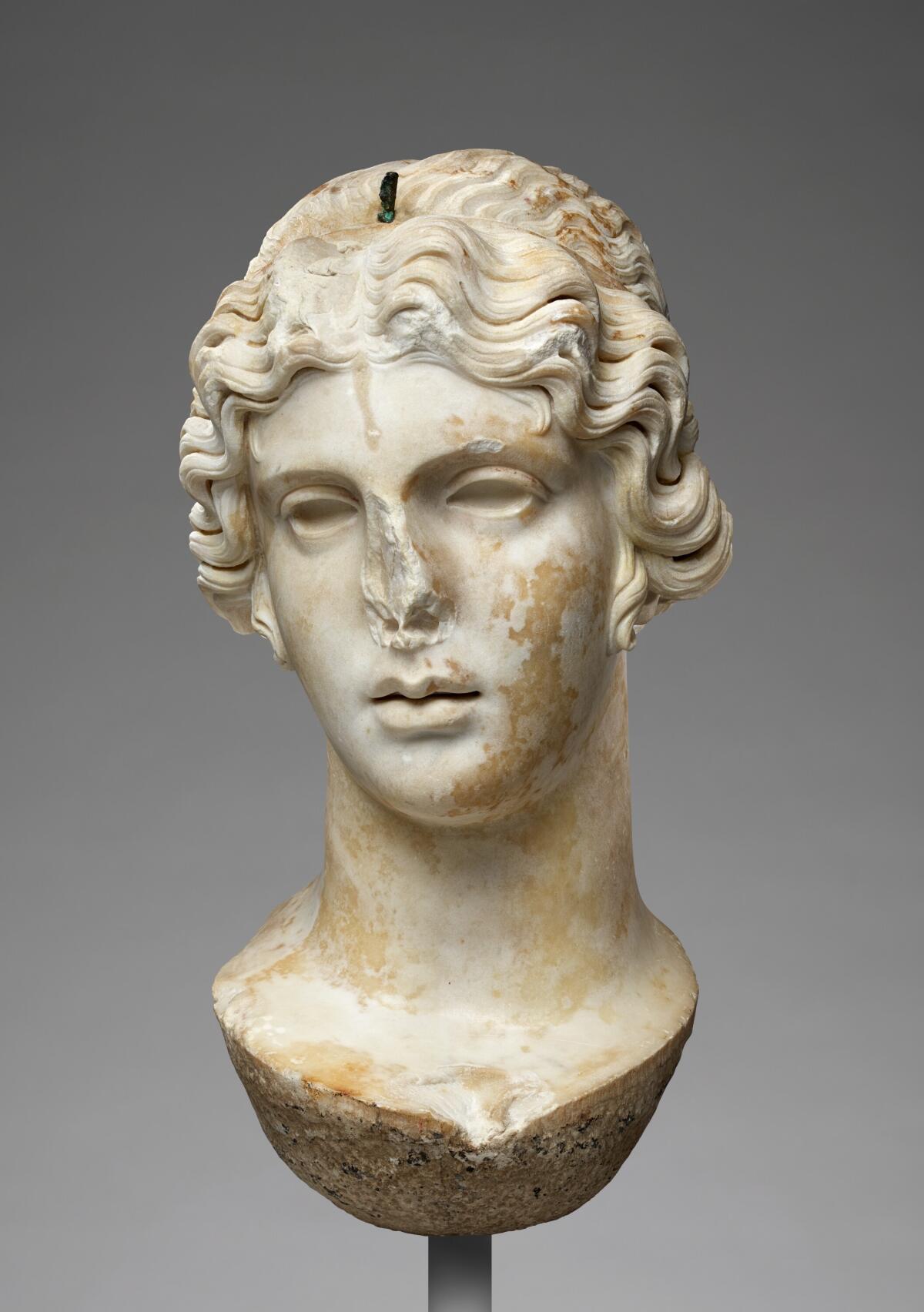
The Orpheus group of sculptures is an incredibly important work to the Getty. It has been on view, in a ground floor gallery at the Getty Villa, since it was acquired more than four decades ago.
“It is a very important work. I’d even say one of the most important in the [Getty Museum’s] collection,” Getty Museum director Timothy Potts said in an interview. “So it will be a loss as to what we can represent about the art of the ancient classical world, in this case southern Italy in the late fourth century B.C.”
Potts said the work is especially unique because of its scale, quality and subject matter — it suggests the mythical story of Jason and the Argonauts, which would make the sculpture’s seated man, who plays a harp-like instrument, Orpheus.
“It’s just extremely rare and there’s nothing similar in our collection, or closely similar in any collection,” Potts said. “It does leave a hole in our gallery but with this evidence that came forth, there was no question that it needed to be sent back to Italy.”
“We value our strong and fruitful relationship with the Italian Ministry of Culture and with our many archaeological, conservation, curatorial, and other scholarly colleagues throughout Italy, with whom we share a mission to advance the preservation of ancient cultural heritage,” Potts said in a statement.
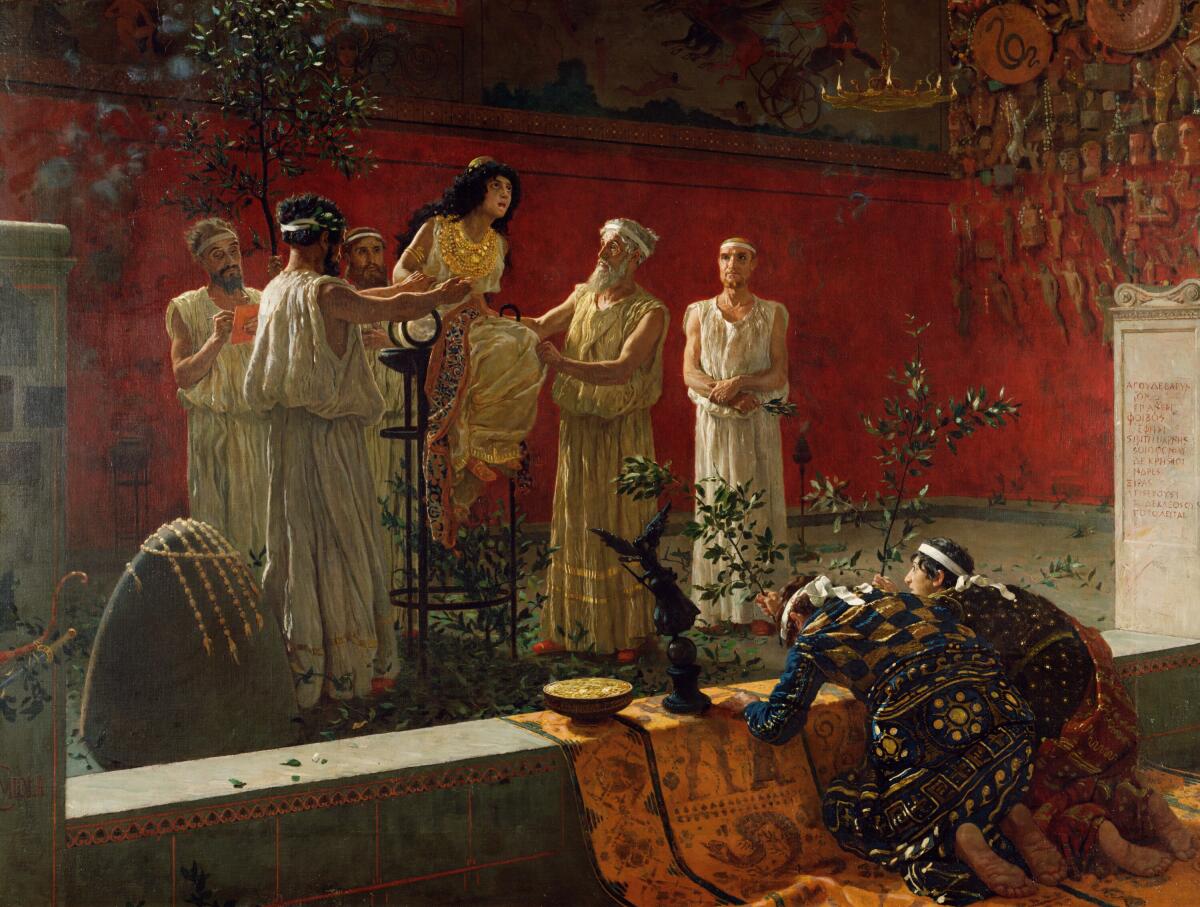
The other pieces being returned to Italy — none of which have been exhibited in recent years — are a colossal marble head of a divinity and a limestone mold for casting pendants, both from the second century A.D., along with a 19th century oil painting by Camillo Miola, “The Oracle,” and an Etruscan bronze thymiaterion, a ceremonial incense burner, from the fourth century B.C. The latter was acquired by the Getty in 1996 while the other three objects were acquired in the 1970s.
More to Read
The biggest entertainment stories
Get our big stories about Hollywood, film, television, music, arts, culture and more right in your inbox as soon as they publish.
You may occasionally receive promotional content from the Los Angeles Times.

